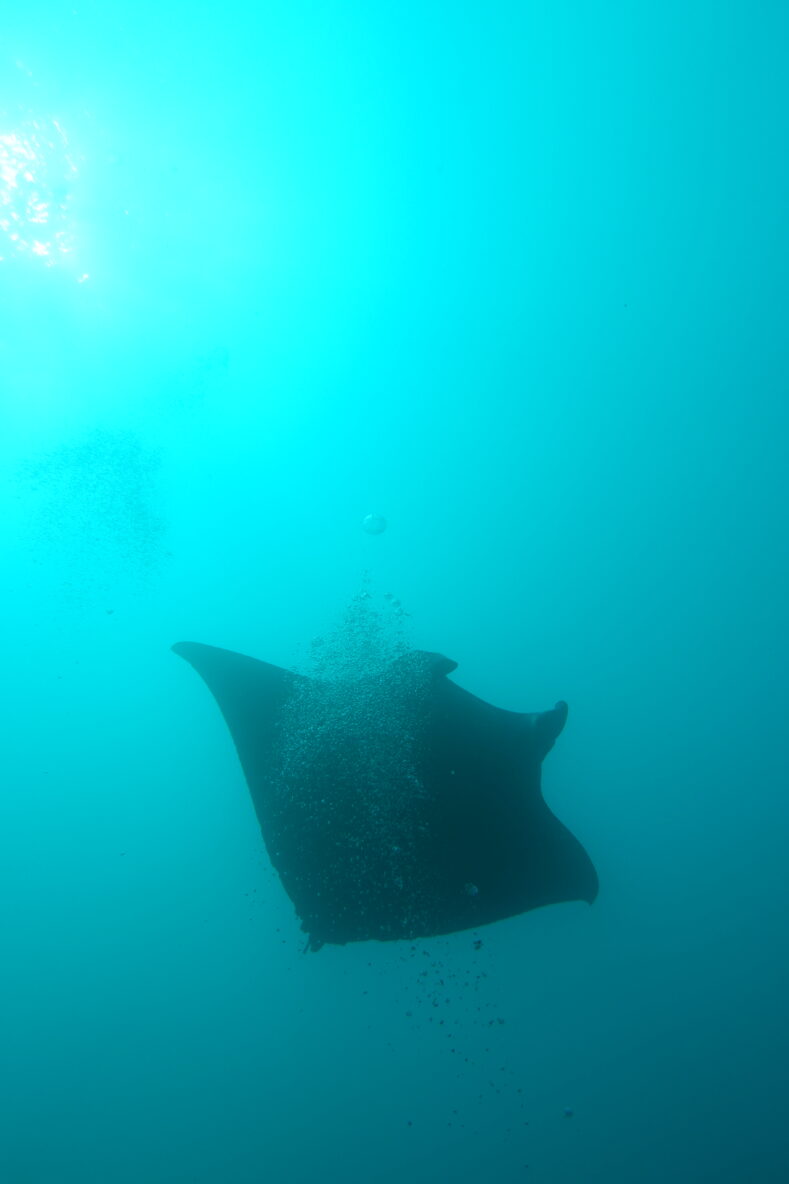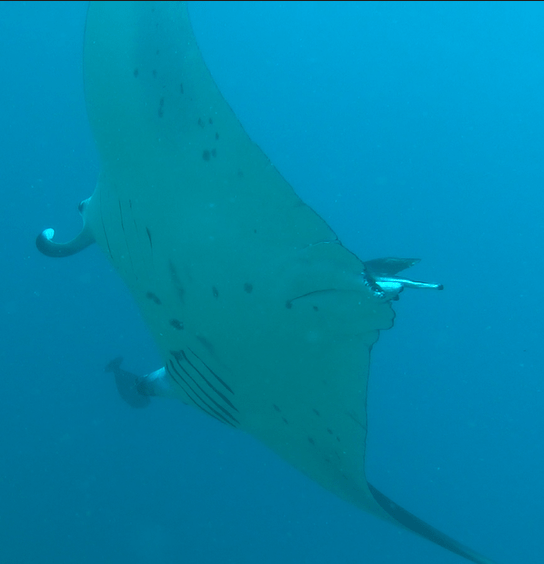The Maldives is home to the largest population of Manta Rays in the world with over 4900 individuals having been identified through the Manta Trust. It is thought that Manta Rays follow their food, known as zooplankton (learn more about plankton from our previous blog: https://gili-lankanfushi.com/mb-blog/spotted-salp-bloom-at-gili-house-reef/), which explains why we see Manta “Seasons.” The mantas migrate to different areas of the Maldivian atolls, chasing their food as the currents change throughout the year.
From December to March is the Northeast monsoon season. During this time currents flow across the Maldives mainly from east to west. From May to September is the Southwest monsoon season and here at Gili Lankanfushi it’s Manta season! In this season, the currents are flowing from West to East and the mantas tend to move towards the East of the Maldives, which is where Gili Lankanfushi lies. An explanation for this is that as the clear oceanic waters are brought in with the currents from the deep ocean of the west, they dilute the nutrient rich waters on the western side of the Maldives. The waters in the East, which are in the shelter of (or downstream of) the atolls are protected, and nutrients and plankton are able to bloom. This attracts the mantas to feed in the “shelter” of the westerly flowing currents.

This means that if you visit us this season at Gili Lankanfushi, whether diving or snorkeling, you can be lucky enough to swim alongside these huge graceful gliders as they feed on the abundant plankton and get cleaned by cleaner wrasse. You can watch the cleaner wrasse remove parasites and dead skin from their mouths, gills and outer body. The reef mantas (Mobula alfredi) that we tend to see at our local sites can grow to a whopping 5.5 m! Even at the time of birth, the baby manta rays already have a wingspan of over 1 m!
On our dives at Manta Point, our marine biologists take photos of the mantas bellies as they pass over. This is because each Manta has its very own spotting fingerprint on its underside, by which it can be identified! Identifying mantas across the Maldives has helped us to better understand how these creatures move and migrate throughout the year.
Last week (September 2022), we encountered nine different manta rays over 3 dives at Manta Point. Two of these came close enough to us that we were able to take photos of their bellies. We sent these photos to the Manta Trust for identification and found out that they are known as Simple and Skua. Simple is an adult male reef manta ray first sighted in North Male Atoll in July 2006. Since then, Simple has been seen over 93 times with the last sighting being in November 2021. Meanwhile, Skua is a juvenile female who was first spotted in September 2013. Since then, she’s been seen 13 times and was last seen in April!
Now that the Mantas have arrived, we can’t wait to spend more quality time with them, observing their behaviors and possibly finding some new individuals too!
